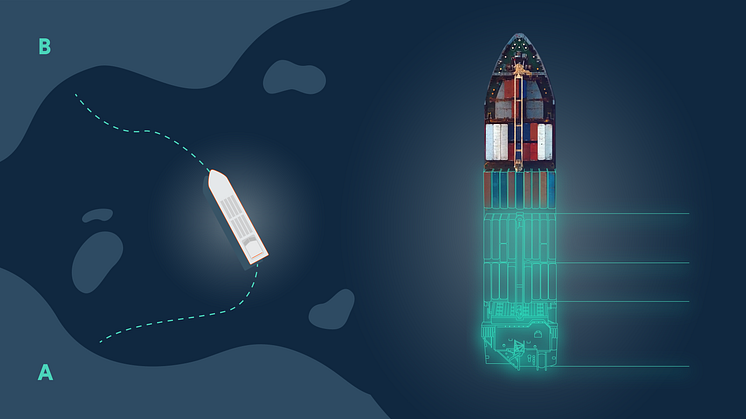
News -
Utilizing digital twin for improved maritime operations
Digital twin technology is revolutionizing industries, offering a risk-free, cost-effective way to analyze and optimize operations. Its potential for the maritime sector is vast but underexplored.
Digital twin serves as a valuable tool for gaining insights without the cost and risks associated with the real operation of the vessel. This technology is commonly employed in aerospace industries, the manufacturing of cars, as well as in infrastructure projects and building construction. It has been proven successful in sectors with high operational costs, such as aerospace and products with version control, including complete items from specific brands. Given its proven benefits across various industries, the maritime sector can significantly benefit from the digital twin model. In this context, it acts as a mirror to reflect the operations of vessel owners, providing insights for purposes such as energy optimization. This approach adds significant value to the industry by saving both costs and time. However, for the marine industries, the concept of digital twin comes with its challenges.
What is a digital twin?
Digital twins, though complex, can be broadly defined as digital representations of real-time events. Commonly, they involve creating a model of the design that mirrors actual operations, enabling real-time analysis and prediction.
Instead of observing the actual operation, it is possible to analyze a digital model of the operation. With this digital version, it is possible to predict future occurrences that may impact operations, learn from them, and implement changes. A digital twin can be cost-effective and can reveal insights not apparent in real operations.
Why utilize digital twin and what are the benefits?
Predictive Analysis: Foresee and mitigate equipment aging or failures.
The main benefit of a digital twin is its ability to generate predictions within a simulated environment or in parallel to real-time operation to create insights and recommendations for an improved operation.
This enables us to anticipate situations not previously encountered and to explore potential outcomes beyond current limited operational domains. It can also be utilized for predicting and measuring changes within operations e.g aging of the equipment onboard. Operators are interested in understanding the impacts of their decisions on energy, design, and cost.
Energy Optimization: Simplify transitions to electrification with accurate ROI predictions.
A digital twin model can be utilized for energy optimization. For instance, consider a vessel owner planning to transition from diesel to electric power. With the digital twin, it is easy to calculate the return on investment, total operational costs, battery size, and the location of charging stations, all without needing extensive calculations. This approach simplifies the process between suppliers and customers by providing a realistic estimate of costs and requirements for transitioning to electrification.
Operational Insights: Evaluate impacts on energy use, design, and cost.
Other significant use cases for the digital twin model include hull cleaning, predictive maintenance, and situational modeling.
Challenges of Digital Twin Models in Maritime
Digital twin models were particularly successful in aerospace industries where the high cost of operation and intensive safety requirement of this industry justify the building of digital twin models. These models can predict the performance and potential failure of the system, e.g., jet engines with good accuracy. Since one company is typically responsible for end-to-end solutions, this provides a high degree of controllability.
The maritime segment also had a high cost of operation; however, there are some major challenges for a design-based digital twin model: 1) a vessel has a combination of several independent component providers which makes the development and updating of the digital twin model challenging 2) maritime segment is has wider technical standards compared to aerospace segment which makes the model development and updating more challenging. Instead of a design-based digital twin model, Cetasol offers a majorly data-driven approach.
Cetasols digital twin
A common challenge with a design-based digital twin model is that, while it incorporates different ship components, it often fails to reflect reality once assembled and operational accurately. We need to optimize and calibrate these components to align better with real-world conditions to address this. However, a design-based model will have significant challenges in the calibration with the realistic data from the operation.
As a result, Cetasol aims to balance the accuracy of the model with its simplicity. Cetasol offers a data-driven approach which means the data from the operation will be used to create top-level vessel models. If there is component data the models can create component information even without the manufacturer’s models. This way of working is typically popular in creating control strategies in the automotive segment. However, the most known fully data-based models are in mobile applications like “Maps” or social networking apps where each user has their own “model”. The models can predict their favorite restaurant or what they like.
One solutions does not fit all vessels
A common misconception is that identical equipment performs uniformly across vessels. In practice, even machinery from the same brand can behave differently depending on operational conditions. However, past experiences show that even the same brand of equipment will act differently in different vessels, hence starting with real operational data and actual conditions is essential which allows even same brand of equipment to have “slightly” different model in different vessels. As we run a vessel, we gather information about its location, energy systems and other sensors. By leveraging this data along with a solid understanding of these components—rather than depending on specific brand designs—Cetasol can develop more accurate digital twin models. This approach significantly simplifies the model development, calibration and updating process and closely aligns with the realities on the ground.
Benefits of data-based digital twin
Since Cetasol’s digital twin is data-based, there is no specific programming for each vessel; the digital twin models of vessels, captains, and ships’ operations, are created daily. Over time, vessels change and a data-based approach enables updating indifferent operations with ease. If the components age or their performance changes, those alterations are reflected in our models as well. The digital twin model is “layered” which means If customers require additional signals, extra layers can be incorporated into the digital twin. This approach is beneficial because this macular approach can serve different vessels with different availability of sensors and consideration of cost aspects in the development and updating of the model. For instance, a small boat may only need a simple digital twin that tracks basic elements like location and energy. In contrast, larger ships consist of many components, and shipowners typically seek a comprehensive model of the entire vessel. They may want to predict the implications of electrifying the ship, which requires a more complex model.
Conclusion
Digital twins are sophisticated digital representations that mirror real-time operational conditions and are utilized to forecast future events while enhancing operational efficiency. Cetasol specializes in the development of digital twins grounded in authentic operational data, which facilitates superior accuracy and adaptability. By employing a data-driven methodology, these models are capable of evolving over time and adjusting to variations in vessel performance. Consequently, Cetasol’s digital twins are both modular and scalable, effectively addressing a range of requirements from the straightforward to the complex across various vessels, including applications in energy optimization and electrification.

